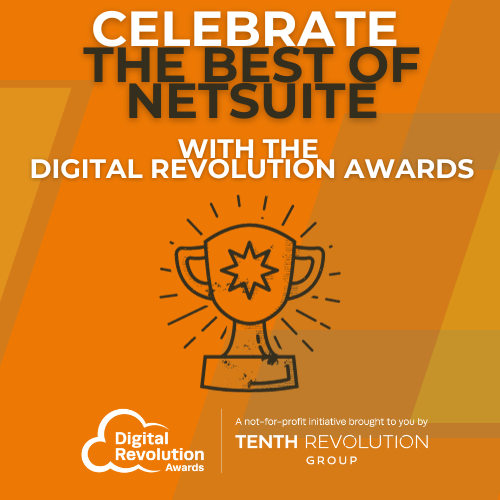5 ways to eliminate bias in the recruitment process

The expectations of jobseekers have changed drastically since the onset of the pandemic. So, now more than ever it’s more important that businesses respond to this and work towards creating a more inclusive workplace environment. Yet it’s not a change that you can make overnight; the unconscious bias of the individual (whether that’s the interviewer or the manager) can derail those efforts. With global workforces becoming more diverse by day, your recruitment methods need to reflect this shift, which means finding ways to improve hiring processes and quash individual bias that could impact your ability to discover new talent.
Here are some of the best ways to eliminate bias in your recruitment process and make it more inclusive and fairer for everyone.
1. Admit where you could do better
Ultimately, the first and most crucial step in eliminating bias is to take a step back and evaluate what biases are apparent in your company. It can be challenging, as it’s hard to own up to negative behaviors (whether unconscious or not). Still, ensuring that your company—as a collective whole—makes diversity, equality, and inclusion key to your values is fundamental. After all, real change can only come after realizing where you could do better.
Ask yourself the following questions:
- What does diversity mean for your company?
- Do you encourage diversity practices, and if so—do your employees engage with them?
- What ethnicities, age, gender, and LGBTQIA+ groups are underrepresented in your workforce, and why?
Only with recognition of where you need to improve can you put measures to enhance the future. Set concrete goals, based on your findings and ensure these are outlined to everyone in your organization. Communication is vital when enforcing any change in the workplace, and especially when building a more inclusive working environment.
Currently, from the selection of NetSuite professionals we surveyed, 73% do believe that their employer champions equal rights in the workplace, with a small but significant proportion of 11% thinking that more could be done. The only way we can play our part in minimizing this divide is by playing a role in quashing biases in every aspect of business, not only in recruitment.
2. Rework your job descriptions
The initial listing plays a crucial part in recruiting talent—it can often be the first impression candidates have of your company and will say a lot about your culture. Therefore, when crafting a job description, you should first consider your use of language. It’s surprising how even subtle choices can demonstrate an inherent bias due to their stereotyped gender connotations.
For example, research has shown that women are less likely to apply for a role that includes primarily masculine-coded language, with adjectives such as “competitive”, “active”, and “determined”, suggesting that they would struggle to fit into the working environment. Yet, using language such as “collaborative”, “cooperative”, and “support” in your listings will attract more female talent to your company.
Before making any listings live, consider what language you have used and see how you could change this to make it ungendered. Keeping a neutral balance in your job descriptions will ensure that no one, regardless of gender, dismisses the position due to their perceptions of your company culture.
Another path you could take in this instance is striking a balance between gendered terms and what adjectives you use. There’s no definitive answer to attracting talent, so be sure to find an approach that works for you, whether it’s a shift in gendered language or finding a middle ground you can use consistently.
3. Use blind recruitment
With many companies turning to automation to speed and scale their recruitment processes, it’s proven that blind recruitment can be an ally for recruiters. The once daunting task of sifting through piles of paper is as simple as setting search parameters and waiting for relevant results to funnel through to your inbox. Removing identifying factors from resumes and applications works to anonymize the candidate, helping hiring teams assess applicants solely based on their suitability without any inherent bias.
Our recent Careers and Hiring Guide found that only 12% of employers surveyed use blind recruitment, with 40% of professionals asked responding that it wasn’t a practice they use, showing that it’s not an openly embraced practice. There isn’t a one-size-fits-all approach to recruitment. While blind recruitment will work to eliminate bias in some businesses, it may hinder the process for others; that being said, it shouldn’t be overlooked in your efforts to diversify your recruitment process.
It won’t work for everyone, but in the right business, it has the potential to be a powerful tool for ensuring everyone is on an equal footing from the start.
Take your next step with us.
Find your dream NetSuite job today with Anderson Frank
4. Implement sample testing
While resumes are the best way to evidence professional ability, they can often lead to unconscious biases, such as where candidates may have completed university or what their working experience looks like compared to another colleague. A great way to combat this is by setting a sample work test for every candidate you offer an interview. It provides an effective prediction of their work style and skill set and how this would translate into their performance as an employee. It also allows you to compare applicants based on their ability rather than factors that may not correlate to the job they are applying for. Automated skills assessments are a simple way to make the shortlisting process fairer for everyone while minimizing your input in the early stages of the application process.
5. Standardize your interviews
Unconscious biases can often materialize in the interview process, either through the interviewer’s interaction with the interviewee or considerate lack thereof. Establishing a set of questions before you begin the interview process is a great way to ensure an equal experience for everyone, where unconscious biases won’t impact the experience for either participant. These questions should focus on factors that directly affect performance, such as when candidates have had to use specific skills in a professional context or how they would respond to a real-life situation at work. If the candidate has made it to this point of the process, you have already established that they have the qualifications and previous experience necessary, so the interview should really be used as a tool to understand if the candidate would fit the role.
There is a risk of depersonalizing the process completely with this approach, and you want to make sure that the candidate feels like they can be themselves at work. So, be sure to allow the candidate to reveal a little about themselves. A great way to do this is by asking the candidate to tell you something about themselves. Asking this question to every interviewee gives them the same opportunity to discuss who they are as a person outside of the workplace, eliminating the risk of any interviewer prejudice ruling the conversation.
We all need to play our part to rid biases from the workplace. By following these steps, you’ll be in good stead to tackle biases and take steps towards eliminating them from your recruitment processes widening your talent pool.




